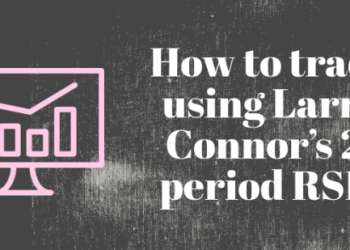A football team goes into a match knowing whether their mentality was to be defensive or offensive. A tennis player knows whether they need to target the opponent’s backhand or forehand side. A good approach and gameplan is a huge step towards success in any field. In this article, we will go through the four most efficient forex trading styles (in no particular order) and help you identify which is the most suitable for your situation.
Considerations when choosing a trading style
There are four main factors that a trader needs to consider when picking their style for trading forex.
Choosing the right currency pair
Currency pair is one that is often overlooked by inexperienced traders. Many believe that forex is not a volatile market hence the choice of currency pairs is not entirely important. The reality is different as currency pairs have different levels of volatility depending on the economic and social circumstances of the country. Choosing a currency pair that aligns with the trading style is one of the most important steps when starting out forex trading.
Time frame
How long will you have your position open? This dictates the types of charts you will be looking at, the position size, and leverage. How much time you can dedicate to trading will also be important in determining the trading time frames. There are different styles that are associated with three main time frames (short, medium, and long-term).
Frequency of opening positions
This refers to how often you will open a position. The shorter-term trading approaches will require you to open and close positions more frequently (which could require more time commitments).
Position size
Mastering the art of risk assessment and understanding how much you are willing to risk for a particular trade is a critical skill to have when trading forex. Position size can vary depending on the level of volatility of a currency pair. A rule of thumb that most traders recommend is never to risk more than 2% of your capital on a single trade.
1. Scalping
This is one of the most popular trading styles employed by both ‘newbies’ and experienced traders alike.
The basics of the scalping trading style are: Open a big position to capitalise on small changes and gain quick profits. You can earn a considerable amount of profit within a minute.
This is good for all traders regardless of capital and experience because it is a quick and safe way to earn profit. If the trade does not go as you expected, you can quickly stop your losses.
People who trade for a living will have time to learn the market thoroughly and understand market patterns throughout the day. Traders who do not have the luxury of time will be able to make quick profits wherever they happen to be. You can make a few bucks on your commute to work!
However, one drawback to this style is that you are likely to be drawn into emotional trading and ignoring the signals on the charts.
The candle charts and indicators you will likely use for scalping are the 1 minute and 5 minutes candles. The target currency pairs will be those with relatively small movements, such as the EURUSD or USDJPY. It will be helpful if you keep track of price patterns during the day when you are not trading so that you understand the market fully before your next trade.
If you plan to be a day trader, effective application of scalping will make up the bulk of your income. It will occupy most of your trading time.
2. Day trading
Day trading, as the name suggests, is normally a style employed by day traders. Trade positions are executed throughout the trading day and are rarely kept open overnight.
This style is most suitable for full-time forex traders who have time to thoroughly research the market. You should analyse the general market trends and sentiment to figure out what to do on a given day.
You should look at the 4 hours candles to keep track of the big picture and the 30 minutes or 1-hour candle to facilitate your trading decisions. It is also safe to double-check the 15 minutes or 5 minutes candles to check for radical market movements.
For this approach, every currency pair has its own strengths; however, it would be more advantageous for the traders to find currency pairs that have distinct movements.
3. Position trading
This is a long-term trading approach anticipating the movements of currency pairs over a large period of time. These traders will research the different factors that affect the exchange rates of currencies. They will do deep research into macroeconomic factors and monetary policies to figure out a general trend.
The targeted time frames for these traders will be from weeks to months.
They will open a few trades within a year and leave it for a prolonged period of time to reap the rewards.
4. Swing trading
Swing trading is the middle ground somewhere between position and day trading. It depends heavily on the short-term trend. This was Bill Lipschutz’s main forex trading approach. Traders should look to take smaller profits when it is generated to reduce the risk. The recommended stop-loss and take profit is around 3-4% and 7-8% per trade respectively. Small wins will eventually add up.
Main takeaways
There are different forex trading styles available for people of all circumstances. Consider what type of trader you are. Someone with a trading profession might have all of these, but if trading is your side income, decide very carefully which trading style is the best for you by considering your capital and how much time you can spend trading.







